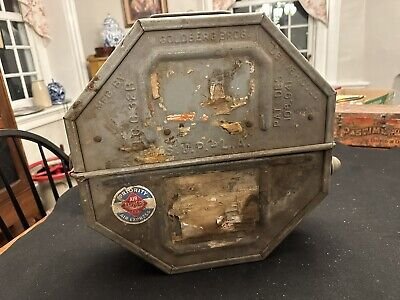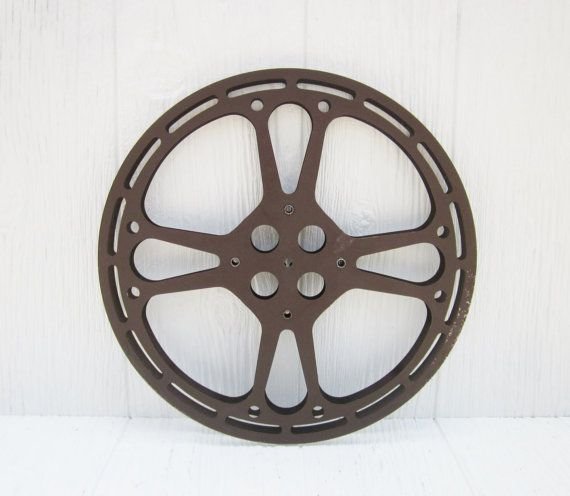Goldberg bros. film reel canister history
Table of Contents
The Goldberg Bros. film reel canisters have an illustrious history that spans over a century, reflecting the evolution of the film industry. Founded in 1899 in Denver, Colorado, the Goldberg Brothers company originally manufactured a variety of products, including restaurant supplies and washing machines. However, it was their foray into film-related products that would cement their legacy.
The Goldberg Bros. became synonymous with the film reel canister, a critical component for storing and transporting motion picture films. Their innovative designs and commitment to quality played a significant role in the development and preservation of cinema. The humble film reel canister became an unsung hero in the world of movies, ensuring that films could be enjoyed by audiences around the globe. With the rise of Hollywood and the golden age of cinema, these canisters became an integral part of the filmmaking process, from production to archiving.

Early Innovations and Expansion
In the early 20th century, as the film industry began to grow, the Goldberg Bros. recognized a burgeoning market for film reel canisters. Their first major innovation was the introduction of the steel film reel canister. Prior to this, films were often stored in wooden boxes or even loose, which posed significant risks for damage and deterioration. The steel canister provided a durable, protective environment that safeguarded the film from physical damage, light exposure, and environmental factors.
This innovation quickly caught on, and the Goldberg Bros. expanded their operations to meet the growing demand from film studios and theaters. The company didn’t stop there; they continued to refine their products, introducing features like airtight seals and rust-resistant coatings, which further enhanced the longevity of the films stored within them. By the 1920s, Goldberg Bros. canisters were being used by major studios such as Universal Pictures and Paramount, becoming a standard in the industry.
Impact on the Film Industry
The introduction of the Goldberg Bros. film reel canisters had a profound impact on the film industry. Not only did they improve the preservation of films, but they also facilitated the growth of the film distribution network. Prior to the widespread use of these canisters, transporting films was a cumbersome and risky endeavor. The robust design of the Goldberg Bros. canisters ensured that films could be safely transported over long distances, enabling studios to distribute their movies to a wider audience.
This, in turn, contributed to the globalization of cinema, allowing films to reach international markets with relative ease. The standardization of film reel sizes and canister designs by Goldberg Bros. also helped streamline the distribution process, making it easier for theaters and distributors to handle and project films. The canisters played a crucial role during World War II, where they were used to transport training films and propaganda across different theaters of operation, showcasing their durability and reliability.

Adaptation to Technological Advances
As technology evolved, so too did the Goldberg Bros. film reel canisters. The advent of magnetic tape and later, digital formats, posed new challenges and opportunities for the company. In response, Goldberg Bros. diversified their product line to include canisters for magnetic tape reels and other media storage solutions. This adaptability ensured that the company remained relevant in an industry that was rapidly changing.
Despite the shift towards digital media, there remains a nostalgic and practical demand for traditional film reel canisters, particularly among archivists and collectors who value the tactile and historical aspects of film. The company also invested in research and development to create canisters that could protect more sensitive digital storage media, ensuring that their products remained indispensable in the modern age. In recent years, Goldberg Bros. has even explored creating custom canisters for digital archives, blending traditional design with modern needs.

Legacy and Continued Relevance
Today, the legacy of the Goldberg Bros. film reel canisters endures. While the company itself has evolved and diversified, their impact on the film industry remains significant. Collectors and historians continue to seek out Goldberg Bros. canisters for their durability and historical value. Furthermore, the company’s commitment to quality and innovation serves as an enduring inspiration in the world of film preservation. As we look to the future, the story of the Goldberg Bros.
film reel canisters reminds us of the importance of preserving our cinematic heritage and the role that seemingly simple innovations can play in shaping an entire industry. The film reel canister stands as a testament to the importance of durable and reliable film storage solutions in maintaining the cultural and historical records of our times. Notably, institutions such as the Library of Congress and the Academy Film Archive have used Goldberg Bros. canisters in their preservation efforts, underlining their continued relevance and reliability.
Case Studies in Historical Preservation
One of the most notable examples of the importance of Goldberg Bros. film reel canisters is their role in the preservation of early cinematic works. In the 1980s, the Library of Congress undertook a massive project to preserve nitrate films from the early 20th century. These highly flammable films were at risk of deteriorating beyond repair. The Goldberg Bros. canisters provided the perfect solution for storing these delicate films, protecting them from the elements and reducing the risk of fire. The success of this project underscored the critical role that high-quality storage solutions play in film preservation.

